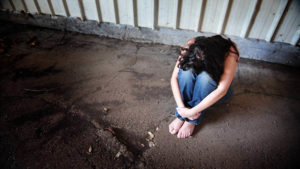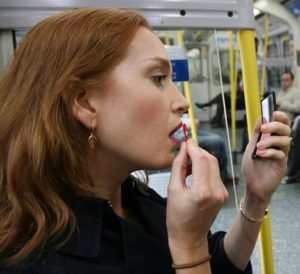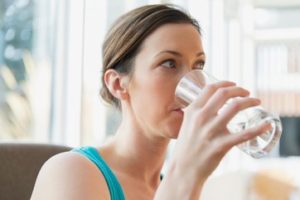If someone said this to you, it would probably make you angry. You might think about slapping that person in the face. I found these words hurtful and confusing. Though they weren’t said about me personally. They were said about my brand.
Sometimes I feel like I’m fighting a losing battle. Since I started this company 23 years ago, it has always been my mission to create products that would help people. My products also had to incorporate wholesome ingredients, and they needed to be affordable. The very first product I ever created, our Herbal Aftershave, was designed to ease the irritation and discomfort associated with shaving. From there I went on to make a 100% natural deodorant made from only four ingredients and a highly moisturizing lip balm. These very first products are still made the same way today.
I’ll never forget many years ago when I was still making products in my kitchen and selling them out of my house, an old farmer came to buy some of our Hard Working Hands. It was a moisturizing balm that was good for very dry skin. He was a soft-spoken gentleman, wearing overalls and a well-worn flannel shirt. As he pulled the crumpled five dollar bill from his pocket to pay me, he explained that he had been to the doctor for his condition, and nothing he had been prescribed seemed to help his cracked skin and dry hands. But my balm worked. It healed his skin and took away the discomfort, and it didn’t cost him a fortune. He smiled and thanked me. My heart melted. I knew this is what I wanted to do with my life.
A few years later when we introduced our very first color cosmetic product – our lipstick – I met with a group of buyers at a well-known natural grocery chain to introduce them to Honeybee. There must have been 20 people in that room as I nervously explained all the healthy ingredients in the product, and how we created colors so that there’s something for every age group and ethnicity. I passed around samples, watching their reactions as they swatched the different colors and applied the product. They loved it! I felt euphoric! Amongst all the excitement, someone shouted out, “how much does it sell for?” Feeling my price was a bit too high, but knowing it had to be there because of all the advertising I was expected to do along with the store free fills, I sheepishly replied, “It’s $7.99.” The fervor quickly died down, and the mood of the room changed. “$7.99? That will never work.” Ugh, I was devastated. I thought my price was too high. But then I heard, “It’s too cheap. No one will buy it. You need to charge more.” Charge more? Huh? “Yeah, you should be charging at least ten bucks for this stuff,” another buyer chimed in. “People will see it’s only $7.99 and think it’s junk.” “But look at the ingredients!” I defended. “You can see my ingredients are better than the competition.” “Doesn’t matter,” said the first buyer. “People expect to see a certain price point in our store. If you’re below that, the perception is your stuff isn’t as good.”
Several years have passed since that learning experience, yet I still face the same challenges today. I hear that our products are TOO affordable. Or that our packaging needs to look like it costs more; maybe add a nice box with some foil embossing. Imagine being turned down because of these reasons. Not because the products don’t work, not because they’re not healthy formulas, but because they don’t fit in with other similar brands who charge more for their products and package them differently.
I’ve been doing this long enough that I know ingredients, and I know how much they cost. A friend recently purchased a natural product, and paid $36 for the tiny 0.2 oz jar. The ingredients were coconut oil, castor oil, beeswax and jojoba. I can tell you the contents of this jar literally cost pennies. BUT the jar itself was a lovely frosted thick glass jar. And it came in a box. My guess is that the company had about a dollar in packaging. So why charge $36 for this item? I can’t answer that. Maybe they were told that they needed to charge more to be taken seriously, and they listened.
The company who chose not to work with us because we are too affordable, carries this $36 item, along with about ten other brands just like it. It’s what they’re known for – selling only high-end beauty products. Of course, that’s not what they tell you in their store and on their web site. No, they say they sell healthy, clean beauty products. Only natural products that pass their tough definition of clean. They mention nothing about price and affordability. Though I have yet to see anything they carry that sells for less than $20.00.
I’m not crying sour grapes here. Really. I just wonder what the motivation is. Is it money? Is it bragging rights? I see it on Instagram. These people who post about having spent $150 on a particular face serum or $80 on a popular eye shadow palette. It’s like they’re saying, “look at me, I could afford to spend the money for this item”. But then they say nothing about the efficacy of the product. Sure, you bought the item but does it really perform any better than something that costs less? Maybe it makes them feel special. And who am I to judge that? To me, it just doesn’t make sense.
So here I am, left somewhere in the middle. Our products are not cheap, mass-produced items spat out by a mega-corporation, nor are we the she-she froo-froo luxury products that will give you bragging rights. We are in this no man’s land of products with really good ingredients and formulas that really work, that look pretty and are also affordable. Maybe this will be a niche someday. I certainly hope so. For now, I guess I’ll just enjoy the solitude.






- Facebook
- Instagram
- Twitter
- YouTube
- Pinterest
Follow @Honeybee_Grdns